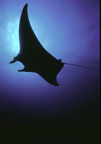SECRETS OF THE GULF EXPEDITION

On Friday, March 2, 2007, Dr. Robert Ballard and a team of researchers embarked on an expedition to the Gulf of Mexico to explore the deep ocean areas in and around the Flower Garden Banks National Marine Sanctuary. The expedition lasted from March 3 to March 9, returning to the Port of Galveston on March 10, 2007.
Read Mission logs
View Expedition photos
SSV CAROLYN CHOUEST
 |
SSV Carolyn Chouest.
Photo: U.S. Navy |
Most of the expedition researchers were on board the submarine support vessel the SSV Carolyn Chouest which towed Argus, a remotely operated vehicle that boasts a variety of cameras and sensors for underwater exploration.
You can still read about the mission and the daily logs submitted by sanctuary staff during the expedition.
Classes and after school programs around the country also followed the expedition and engaged in activities developed by Immersion Presents and sanctuary staff. You can download two of these activities from the For Teachers page of our website.
top of page
NR-1
 |
Nuclear research submarine NR-1 under tow behind the Carolyn Chouest.
Photo: U.S. Navy |
Two researchers were also on board the Navy's nuclear research submarine NR-1 at any point in time. They watched the scenery through underwater viewing ports and attempted to collect occasional samples. Sanctuary Superintendent G.P. Schmahl was one of those on board when the sub left Galveston on March 2nd.
Communications between the sub and the surface vessel are limited when the sub is submerged, so there weren't any live video feeds from there. However, when surface conditions allowed, the sub transferred staff and video footage to the Carolyn Chouest.
top of page
SCIENCE COMMAND CENTERS
 |
Scientists at a remote observation console.
Photo: Institute for Exploration |
Ballard and many other scientists actually participated remotely from specially designed consoles in Providence, Rhode Island, Seattle, Washington, Silver Spring, Maryland, Corpus Christi, Texas and Mystic, Connecticut. These scientists had the same live video feeds as those out in the field. In this way, many more researchers could benefit from the wealth of data being gathered and provide immediate feedback on what was being viewed.
The technology involved in this endeavor was incredible!
To help all of the researchers on land and at sea, the sanctuary developed special posters to help with identification of deepwater sea life. Emma Hickerson created these posters using images from many previous ROV cruises and identification information gleaned from experts in the field. To download your own draft versions of these posters, please visit the poster section of our online Science Reports page.
top of page
SCUBA OPERATIONS
 |
A manta ray swimming through the sanctuary.
Photo: FGBNMS/Hickerson |
While deepwater operations were performed with the NR-1 and Argus, sanctuary supported researchers used SCUBA to continue science efforts on the coral cap. These shallow water operations were part of the annual winter research cruise sponsored by the Flower Garden Banks National Marine Sanctuary aboard the M/V Fling.
Researchers on board the Fling planned to tag additional mantas, retrieve acoustic data from previously tagged mantas, monitor conch populations and observe parrotfish predation on the reef. Studies of coral bleaching and disease were also continued.
top of page
COLLABORATION


The entire expedition was a huge collaborative effort between researchers and scientists from all different kinds of organizations. Most notable among the partnering organizations were the National Marine Sanctuary Program, Immersion Presents, U.S. Navy, University of Rhode Island, Mystic Aquarium and Institute for Exploration, and the Mashantucket Pequot Museum.
top of page